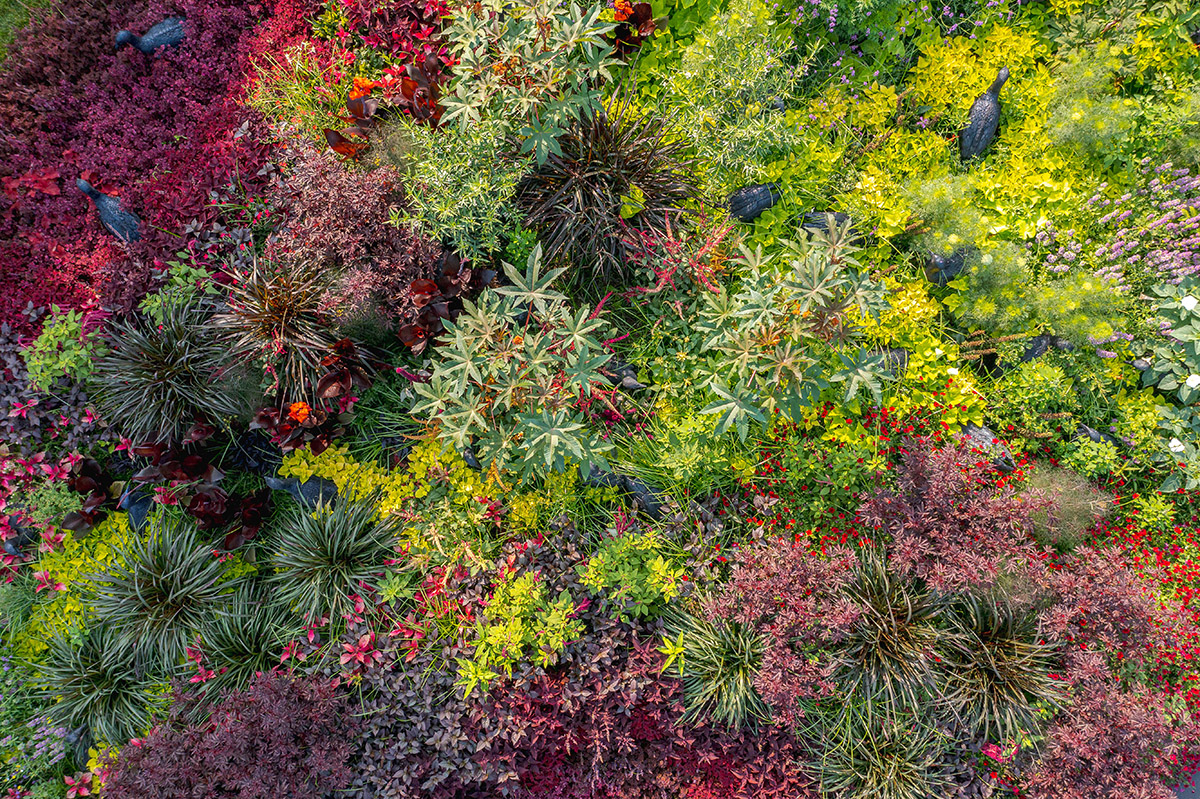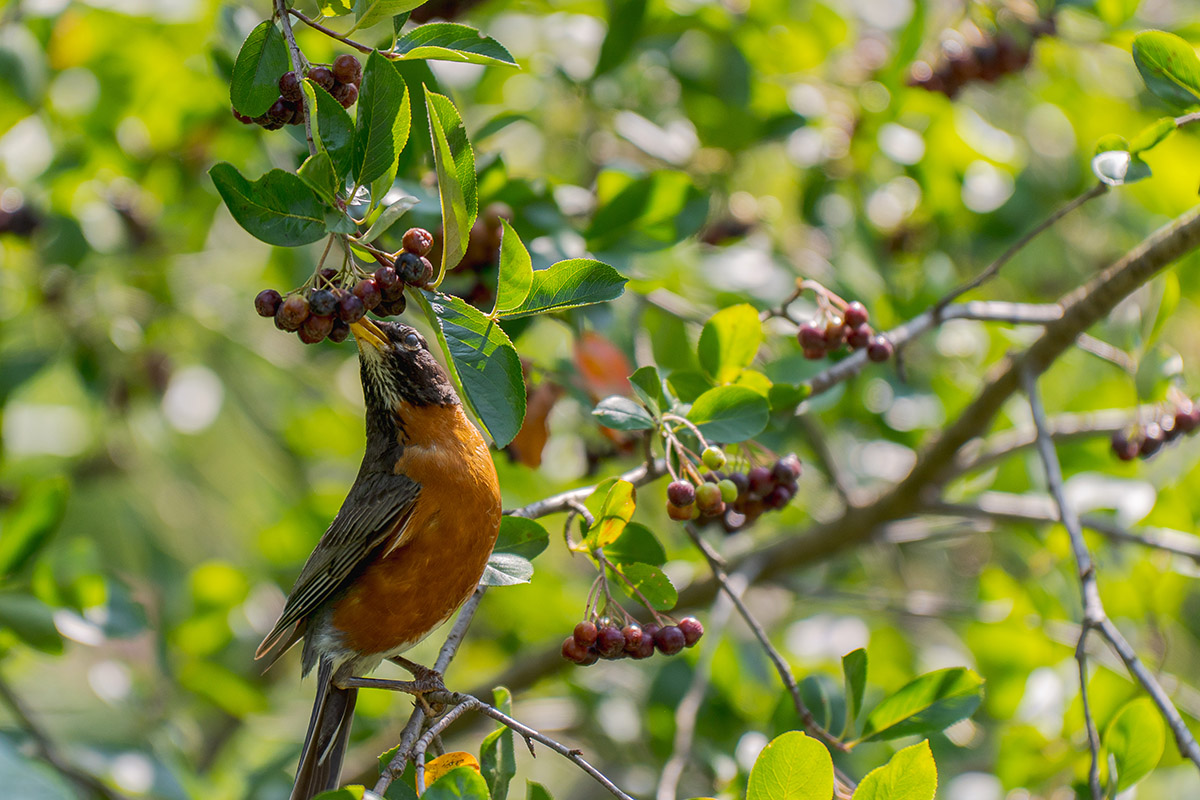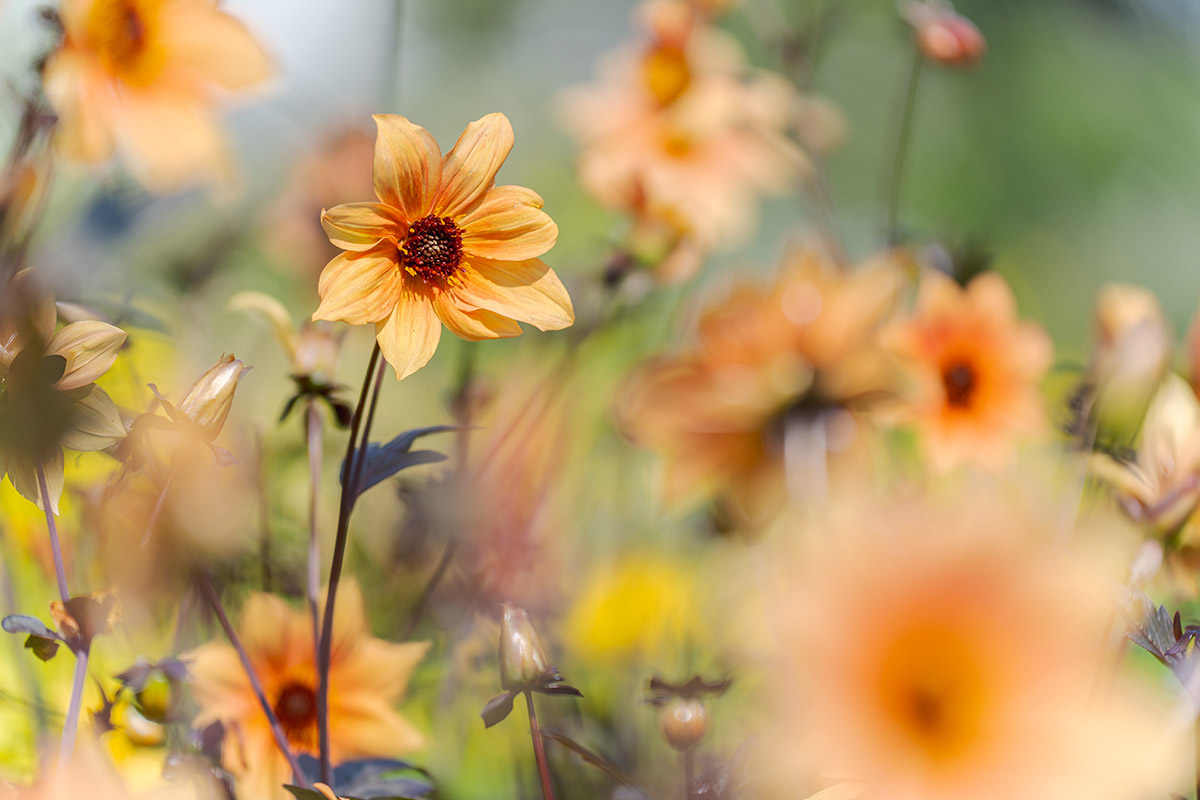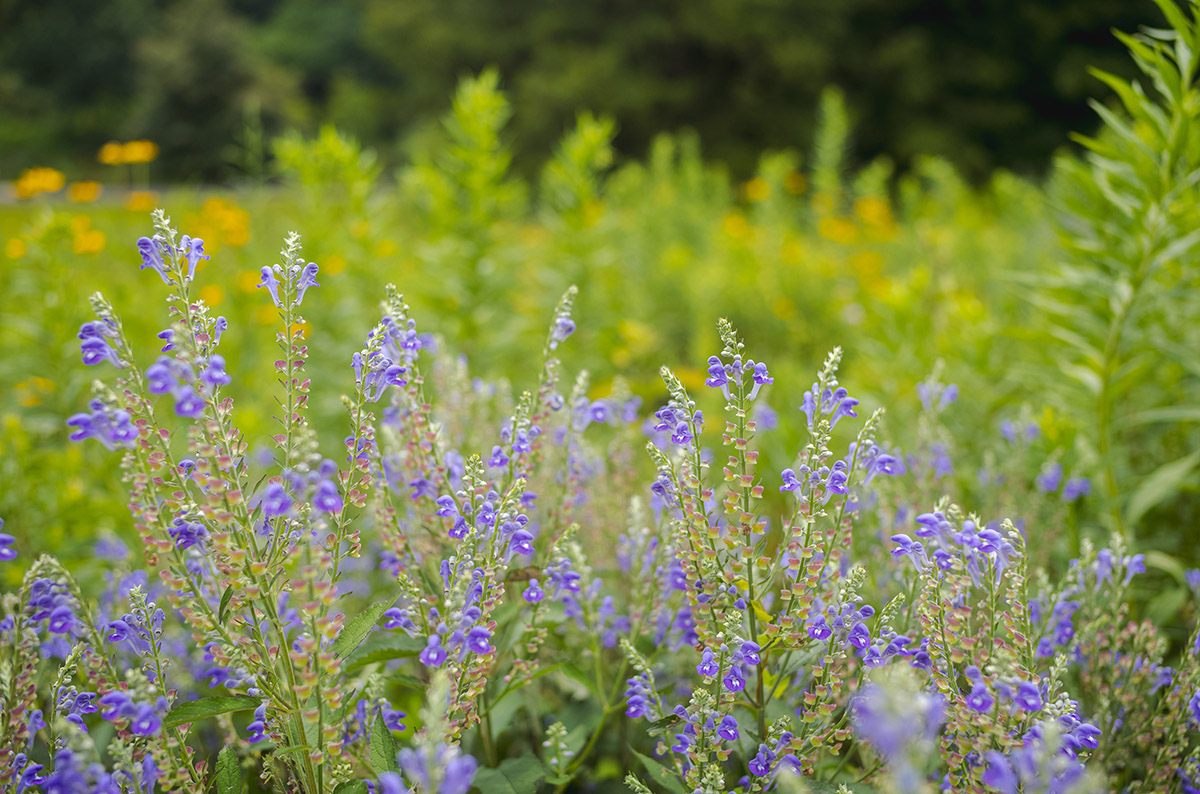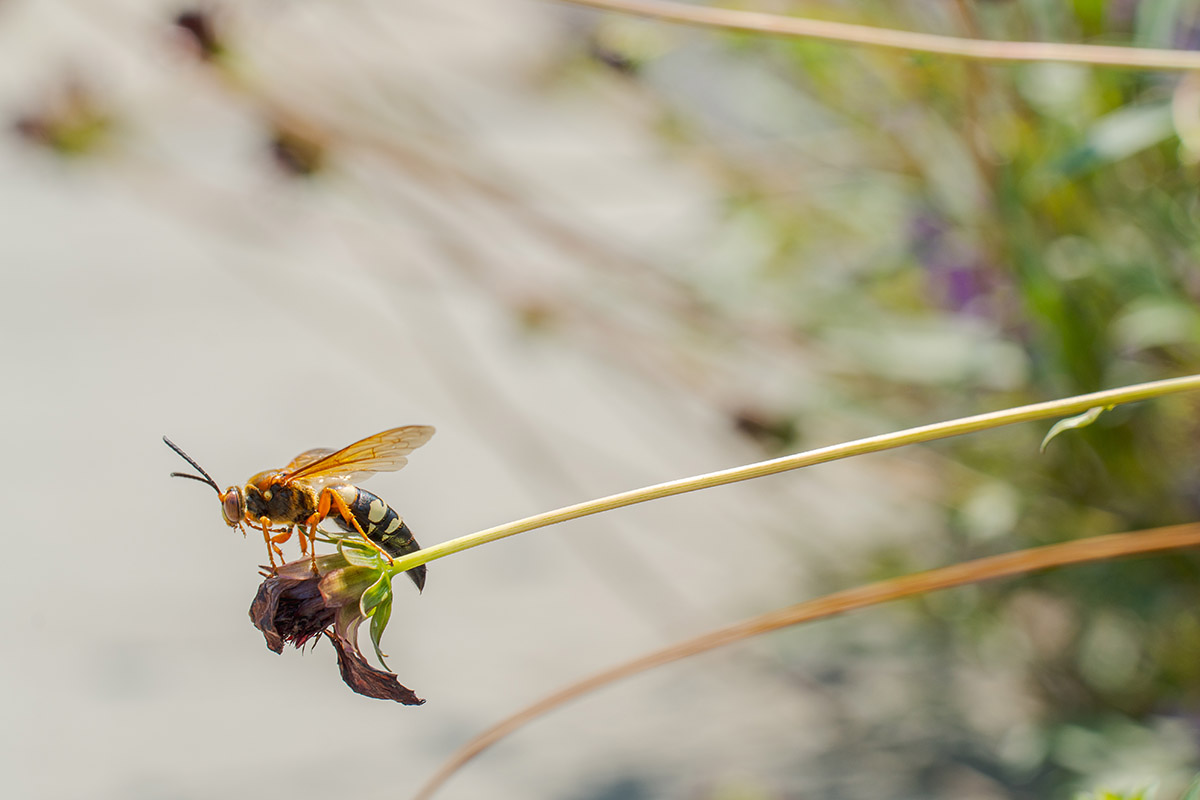Presently at NYBG: Floral Abundance
Marlon Co is the Photographer & Digital Media Manager at The New York Botanical Garden.
It’s summer at the Garden, and the long days of light bring forth an abundance that is especially evident this week on Presently.
- Ebony G. Patterson's plantings fill out on the Conservatory lawn.
- A robin takes lunch with a feast of chokeberries.
- Dahlias put on a show of fall-themed colors well ahead of next season.
- The Native Plant Garden's meadow shows off its seasonal color.
- A cicada killer makes the rounds on a sunny summer day.
Perhaps most visible on the Conservatory lawn, the summer exhibition …things come to thrive…in the shedding…in the molting… by Ebony G. Patterson has filled in since its installation, engulfing the presence of the once dominant glittering vultures. Seen from above, the plants selected by Ebony G. Patterson form a maximalist tableau of texture and color reminiscent of her prior artworks. This richness spills into other areas of the Garden, aided by the abundant light during the height of summer.
Elsewhere, newly flowering plants like dahlias open in the Perennial Garden while the birds and other animals enjoy sun-ripened fruits including black chokeberry. Meadow plants like hoary skullcap are only just beginning, a sign of more to come in the Native Plant Garden. Our planet’s proximity to the sun allowed life to thrive and the resulting co-evolution of plants and animals created a vast web of interdependence which makes our world as incomprehensibly complex as it is wondrous and beautiful. The Garden sits as just a small reminder of that, and it made an email from Director for Plant Health, Vincent Galatolo, that much more exciting.
Vincent invited me out in hopes of helping to document the local ecology of the Peggy Rockefeller Rose Garden, which is for the most part a monoculture—consisting of mainly one type of plant. While typically unfavorable for wildlife diversity, Vincent mentioned that even as a monoculture, the Peggy Rockefeller Rose Garden stands apart, still attracting a whole host of organisms, both beneficial and not. A highlight he pointed out were the charismatic cicada killers which were thankfully more content to chase each other around than me. By photographing these and many other creatures that visit this Garden, he hopes NYBG can be better informed on the types of pest controls needed to keep our collections healthy and beautiful while minimizing environmental impact. He says the more we can avoid chemical controls and continue to attract beneficial insects that prey on pests like aphids, the more sustainable the Garden can be moving into the future.
The journey of discovery never ceases here, and I look forward to sharing that and more in next week’s issue of Presently, a weekly showcase of our favorite moments at NYBG.
SUBSCRIBE
Enter your email address to subscribe to this blog and receive updates on new posts.
